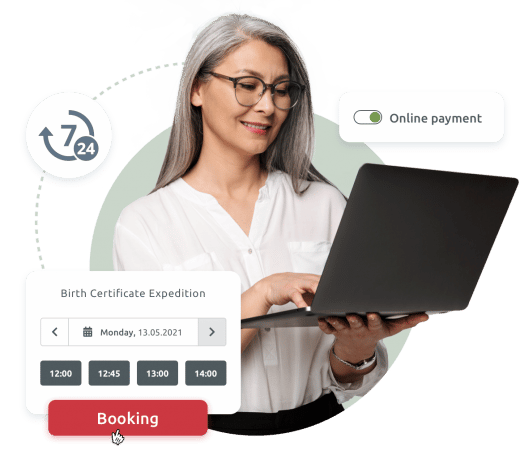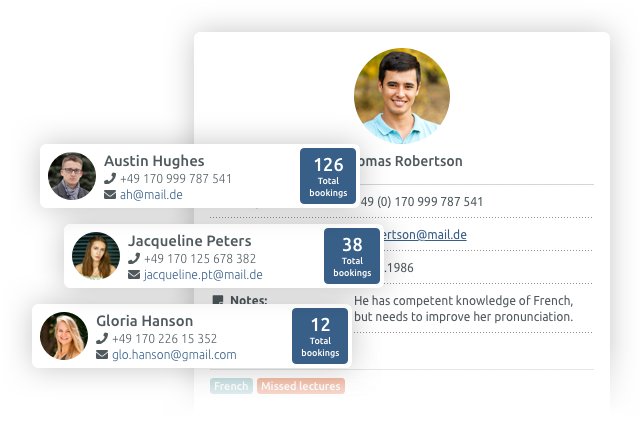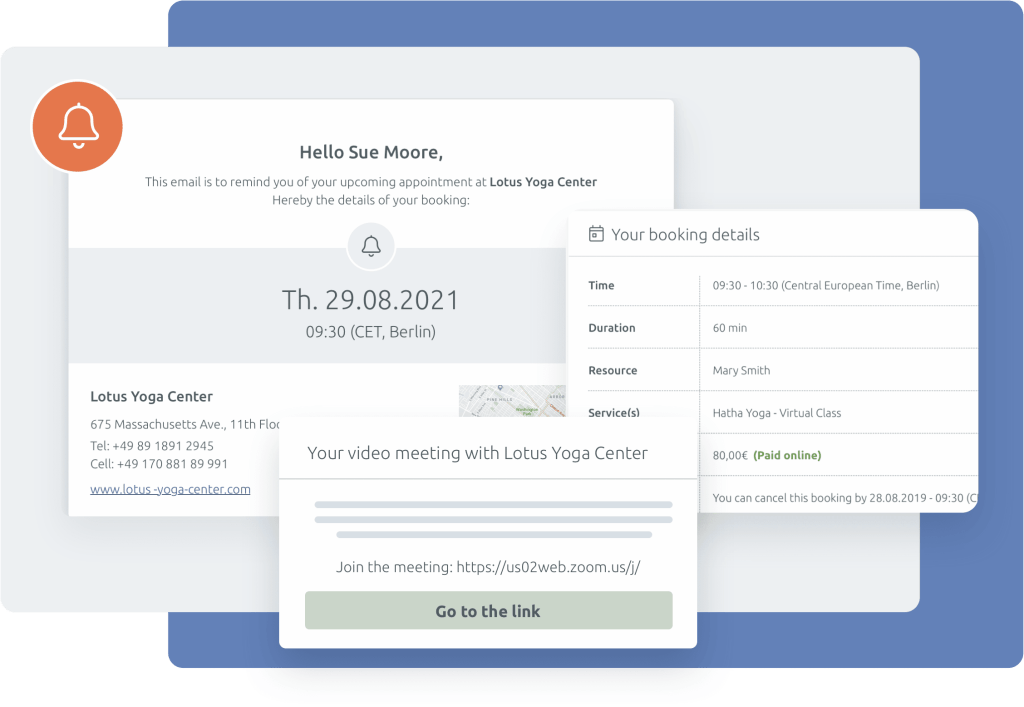

Jon Morgan
Jon is the founder of two successful e-commerce and SaaS businesses. He's passionate about sharing what he has learned from working with business owners through Venture Smarter.
When appointments do not work out, it can often be a nightmare. A scheduled appointment can fail to materialize for different reasons; sometimes the client fails to show up, other times the client shows up and discovers that you can’t attend to them because you’re engaged in other activities. Both situations are frustrating and costly.
Figuring out how to schedule appointments with clients shouldn’t be an overwhelming task. It’s also beneficial to get it right because you’ll avoid misunderstandings with loyal customers and prevent missed appointments.
If you’re looking for how to schedule appointments with clients more effectively, read on for our six invaluable tips.
1. Use scheduling software

The scheduling software can be an online or a desktop appointment scheduling app. According to VerifiedMarketResearch, corporate appointment scheduling is expected to grow tremendously by 2027 across multiple industries. So, you shouldn’t hesitate to use scheduling software for your business.
Using scheduling software makes it easier and faster for clients to book appointments with you. Appointment scheduling tools like TIMIFY have features such as Google calendar integrations and automated email reminders that help you and your client to avoid missing appointments.
The software also makes it easy for business owners to manage employees’ availability and provide better customer support. For example, Apple requires clients to book an appointment before going for device repairs or any other service.
Another important feature of appointment scheduling software is the ability to create resource dependencies for certain services. This means you can set up staff members, rooms or equipment that are essential for certain services. Now, when a customer books that service, all essential resources will automatically be reserved. This can help bring huge efficiency gains through real-time visibility of the availability of your staff and equipment resources.
Digital booking systems also ensure one-click booking from every page of your website, social media, smartphone and tablet apps and even your Google Maps or Search results pages. You can add QR codes to shop windows, business cards, flyers, and waiting rooms. This all helps to ensure customers’ quick access to booking appointments across platforms, whether online or offline.
When choosing an online booking software solution, look out for one that allows you to collect and manage client information with ease. You should also ensure that the appointment scheduler will let you collect appointment details about why your clients want a meeting.
It’s also a big plus if your scheduling software allows online payments so that the clients who want to pay beforehand can do so. Alternatively, the software could have integrations with payment platforms that serve the same purpose.
Finally, make sure you use scheduling software that’s compatible with mobile phones. This way, your clients can conveniently book, accept, and cancel appointments on the move.
2. Engage with customers
Customers appreciate it when the service provider pays attention to them. So, you should always empathize with your customers.
The best way to get this message across is by engaging the client. Before accepting an appointment, ask as many relevant questions as possible. You can ask questions such as:
- How long should the appointment be?
- Will the appointment be virtual or in a physical location?
- How many meeting attendees will there be?
- What will be the main agenda for the meeting?
- Do they have any special requests beforehand?
If you cannot do this one-to-one or on VOIP calls, then ensure that you have a form the customer can fill out so that you can understand how they need your help.
You can further engage with customers through newsletters, social media, and interacting with their comments on your website. By finding avenues to communicate with your clients continually, you become a part of their experience, and whenever they need a service you offer, they will schedule with you.
Scheduling software solutions like TIMIFY can help engage with customers by:

- offering ultimate convenience and one-click booking
- using previous customer data to pre-populate booking forms next time
- broadening the range of online and offline services possible
- giving customers the freedom to choose the perfect time and even employee for them
- transforming drop-in services to reduce wait times and overcrowding
- offering omnichannel interactions that let customers switch between the channels that suit them best at a given time
- incorporating feedback channels and 3rd party platforms to ensure you engage in conversation and feedback.
Engaging your customers is an excellent way to ensure that they honor their appointments and assure them that you are available for the time they booked.
3. Introduce slot-locking features
Double booking is a frequent scheduling mistake that is frustrating for the client and stressful for the service provider. Slot-locking ensures that a slot that has already been booked can no longer be booked by another person.
As soon as a customer online, or booking staff personnel, schedule a time slot, it becomes locked for others on any platform. This is a useful feature, especially if you combine staff members taking bookings, call centers and online booking for customers.
There can be times within your business hours when you want to do things in the office, such as documentation and administrative tasks. During this time, you may not want to see clients. You can set up the appointment scheduler based on your availability. This way, the time slots for when you are unavailable to customers will be automatically locked.
You can also add buffer times before and after appointments, leaving time for admin work, cleaning, room set up etc. It’s important to include this when scheduling appointments to prevent these meetings from eating into the next ones. In other words, you can prevent a scheduling over-run with the tool.
Furthermore, effective marketing and lead generation are important things to do after getting an LLC. or Ltd. When you do this, there is a high tendency that you’ll attract new leads. However, if you do not maximize the slot-locking feature, your legacy booking systems may become overloaded, leading to booking errors or delays - and a bad first impression. All of these issues are frustrations for customers and may lead them to go elsewhere.
On the other hand, if you have a large team, you can use task management software to assign team members who will handle some of the meetings your clients have booked. This is an effective approach to client management and will help you improve your customer service.
4. Prioritize customer privacy

Protecting your customer’s privacy should be a priority. For example, when using scheduling software and a slot is already booked, it should only show that it is unavailable. It should not reveal the details of whoever booked the slot.
Also, if booking an appointment requires the customer to provide sensitive information like health status, home address, email address, or credit card details—it is essential to keep such information private. You must reassure clients that their personal information is safe with you.
If your booking process is done online, you can take this further by providing a privacy statement on your website to show customers how you use their personal data. Businesses looking for a digital scheduling system with a client database should also look for assurances they are compliant with all data legislation in their region.
When clients know that you care about their privacy, they are more inclined to trust you, book with you, and follow up with their appointment.
5. Use time management apps
Using time-management apps is an excellent way to track your time usage and that of your team. Time-management apps allow you to keep track of all your employees and clients in one place.
Below are just some of the advantages of using time-management apps to schedule client appointments effectively.
- Bill accurately: With a time-management app, you can easily track the exact time spent with a client and, therefore, bill more accurately.
- Manage tasks: A time-management app allows for ease of planning for tasks, appointments, projects and more, ensuring that every client or project gets the full attention they need, while delays and errors are minimised.
- Improve productivity: When you know where you should be, at what time, with whom, and what you’ll be doing, you can adequately prepare and be present during the appointment. This ensures high quality service in the moment for individuals, which in turn serves your business well in future through positive reviews and recommendations.
- Easily communicate progress: A time management app can help you break down customer flows, or project flows, into manageable and trackable stages so you can allot time and resources accordingly in advance. The app updates progress and syncs across your team wherever they are. This helps ensure everyone is kept up to date on the progress and delays are accounted for and dealt with early.
- Improve profitability: A time-management app helps you improve your productivity and customer experience. Success in these two areas significantly improves your bottom line. A time management app gives you a breakdown of your tasks, and an accurate overview of the specific resources you need to allocate for the completion of each task. The result is that you don’t overspend for these resources.
You can also synchronize a time-management app with the scheduling software to ensure everything is in one place, making appointment scheduling effective and efficient.
6. Follow up to reduce no-shows

If the client fails to show up after they have booked with you, it can be frustrating. Therefore, it is in your business' best interest that you make sufficient follow-ups to understand no-shows and take steps to minimise them in future.
The secret to efficient follow-up is a process that stops clients from missing appointments. For instance, you should not reach out with the question, “Are you showing up?” Instead, you should reach out with a new piece of information and express that you are looking forward to your appointment.
You can tell a client that you have been looking at their file and have discovered something interesting that you are excited to discuss in the next appointment. This makes the experience more personal and the customer more likely to attend.
Also, you can send the client reminders before the meeting time. You may even prompt them to confirm their attendance when you reach out to them.
In Closing
“Meeting” is a buzzword in any industry. Therefore, learning how to schedule appointments with clients is crucial to avoiding disappointments and other eventualities.
Part of effectively scheduling meetings is leveraging technology. Technology makes it easy to set up appointments, synchronize calendars, and send reminders for meetings. As we have seen, scheduling software and time-management apps are crucial in achieving this.
At the same time, you must ensure that customer privacy is a top priority by keeping their confidential information safe.
Meanwhile, slot-locking features ensure you do not double-book your clients. Such scenarios create a poor impression on the client.
Once scheduling is taken care of, make sure you engage with your customers at all times. You can reach out when making follow-ups on the appointment or when asking for clarifications.
Following these tips will let you schedule appointments with your clients seamlessly, leading to better time management, smooth client engagement, and, ultimately, more business for you.

About the author
Jon Morgan
Jon is the founder of two successful e-commerce and SaaS businesses. He's passionate about sharing what he has learned from working with business owners through Venture Smarter.
Related articles


